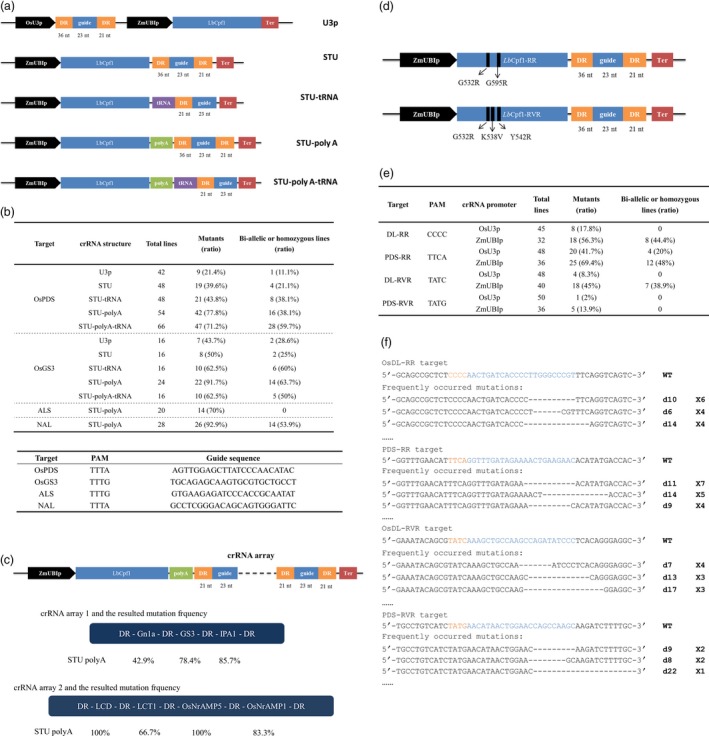Figure 1.

Gene editing in rice using LbCpf1in STU systems. (a) Diagrams of the CRISPR‐LbCpf1 construct. The length of the DR and guide RNA is labelled. A CaMV 35S promoter terminator (ter) was used for the LbCpf1 and the fusion transcript. (b) Upper table, targeted mutagenesis frequency induced by LbCpf1 with different crRNA expression cassettes. Plants with homozygous and biallelic mutations but not chimeric mutations were used to calculate the ratio in total mutants. Lower table, the targets examined by the LbCp1‐STU vectors. (c) Multiplexed gene editing using STU‐poly‐A vector. Upper, diagram of LbCpf1‐mediated multiplex editing construct. Lower, mutagenesis frequency of Gn1a‐GS3‐IPA1 and LCD1‐LCT1‐NrAMP5‐NrAMP1 gene arrays. (d) Schematic illustration of the expression cassettes in the engineered Cpf1 binary vector. Arrow indicates the point mutations of the specific variants. (e) Targeted mutagenesis frequency induced by LbCpf1 variants in T0 transgenic plants. (f) The most frequently occurring mutations induced by LbCpf1 variants in the STU plants. The top sequence comes from the WT that contains the PAM (orange) and spacer (blue) sequence. –, deleted nucleotides. The numbers of deleted nucleotides (#) are shown on the right as d#. The number on the far right indicates the plants carrying the mutation.
